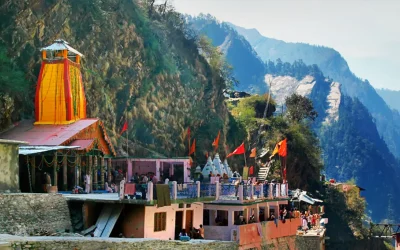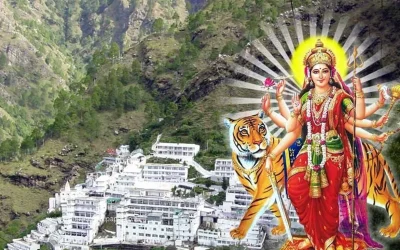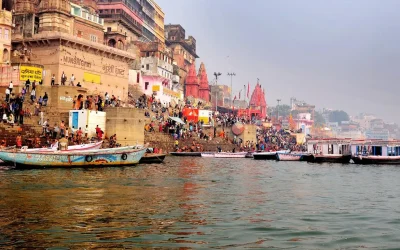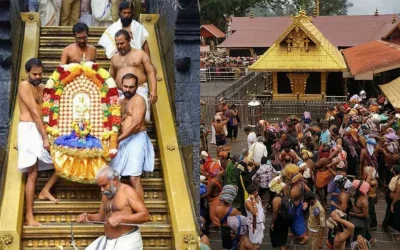History of Rameshwaram
Rameshwaram, a sacred island located in the Gulf of Mannar in southern India, holds immense historical and religious significance. The history of Rameshwaram is deeply intertwined with Hindu mythology and is renowned for its association with the epic Ramayana.
The history of Rameshwaram is inseparable from the legendary Hindu epic, the Ramayana. According to the Ramayana, Lord Rama, accompanied by his brother Lakshman and loyal devotee Hanuman, embarked on a journey to rescue Sita from the demon king Ravana. The climax of this epic saga unfolded on the shores of Rameshwaram.
 Rameshwaram is believed to be where Lord Rama performed a sacred worship ritual to seek blessings from Lord Shiva before launching the attack on Lanka. The significance of Rameshwaram lies in establishing the ‘Rameswaram Setu’, or the Adam’s Bridge, a mythical bridge said to have been built by Lord Rama’s army of monkeys to cross over to Lanka. This bridge, also known as ‘Ram Setu,’ is said to connect Rameshwaram to Mannar Island in present-day Sri Lanka.
Rameshwaram is believed to be where Lord Rama performed a sacred worship ritual to seek blessings from Lord Shiva before launching the attack on Lanka. The significance of Rameshwaram lies in establishing the ‘Rameswaram Setu’, or the Adam’s Bridge, a mythical bridge said to have been built by Lord Rama’s army of monkeys to cross over to Lanka. This bridge, also known as ‘Ram Setu,’ is said to connect Rameshwaram to Mannar Island in present-day Sri Lanka.
Apart from its mythological roots, Rameshwaram has a rich historical past. It was a crucial maritime center and trade hub during ancient times. The island’s strategic location in the Gulf of Mannar made it a vital point for maritime trade between India and other Southeast Asian countries.
The historical records suggest that Rameshwaram was part of the Pandyan Dynasty, which ruled over the southern regions of India. Over the centuries, the island witnessed the rise and fall of various dynasties, including the Cholas and Cheras, who vied for control over the lucrative trade routes passing through the Gulf of Mannar.
During the medieval period, Rameshwaram came under the influence of various Islamic rulers. The island witnessed a blend of Hindu and Islamic cultures during this time. The Delhi Sultanate and, later, the Bahmani Sultanate held sway over the region.
 In the 14th century, the Vijayanagara Empire, including Rameshwaram, emerged as a dominant force in the Deccan region. The Vijayanagara rulers patronized the construction of temples and other architectural marvels on the island, contributing to its cultural and religious heritage.
In the 14th century, the Vijayanagara Empire, including Rameshwaram, emerged as a dominant force in the Deccan region. The Vijayanagara rulers patronized the construction of temples and other architectural marvels on the island, contributing to its cultural and religious heritage.
The Nayak Dynasty, which succeeded the Vijayanagara Empire, played a significant role in the history of Rameshwaram. The Nayaks were instrumental in the construction of several temples and the development of the island’s infrastructure. The Ramanathaswamy Temple, dedicated to Lord Shiva, is a testament to this period’s architectural brilliance.
In the 17th century, Rameshwaram witnessed the influence of the Maratha Empire under the leadership of Chhatrapati Shivaji. The Marathas established control over the region, contributing to the island’s cultural and historical tapestry.
The arrival of the British in the 18th century marked a new chapter in the history of Rameshwaram. The British East India Company took control of the island, and Rameshwaram became a part of the Madras Presidency. The British, recognizing the island’s strategic importance, developed it as a naval base and trading post.
During the colonial era, Rameshwaram continued to be a pilgrimage centre for Hindus, drawing devotees from across the Indian subcontinent. The British administration, while making certain infrastructural developments, also impacted the traditional way of life on the island.
With India gaining independence in 1947, Rameshwaram became a part of the newly formed Indian republic. The island continued to thrive as a religious and cultural center, attracting pilgrims and tourists alike. The construction of the Pamban Bridge in 1914, connecting Rameshwaram to the mainland, further facilitated accessibility and contributed to the island’s socio-economic development.
Today, Rameshwaram stands as a symbol of religious harmony and cultural diversity. The island has retained its spiritual significance, with the Ramanathaswamy Temple being a major pilgrimage destination for Hindus. The island’s historic structures, architectural marvels, and scenic beauty continue to draw visitors, making Rameshwaram a timeless gem in India’s historical and religious landscape.






